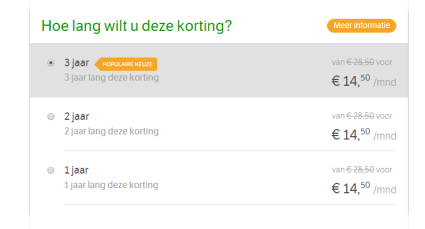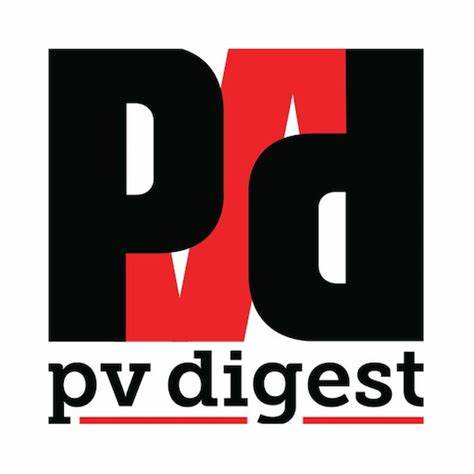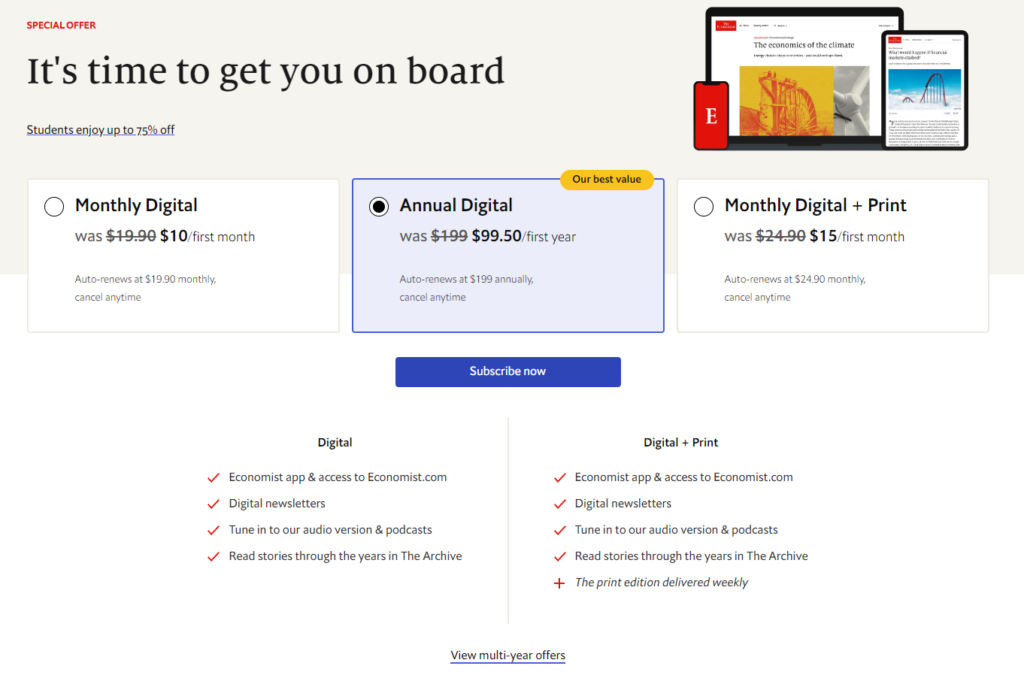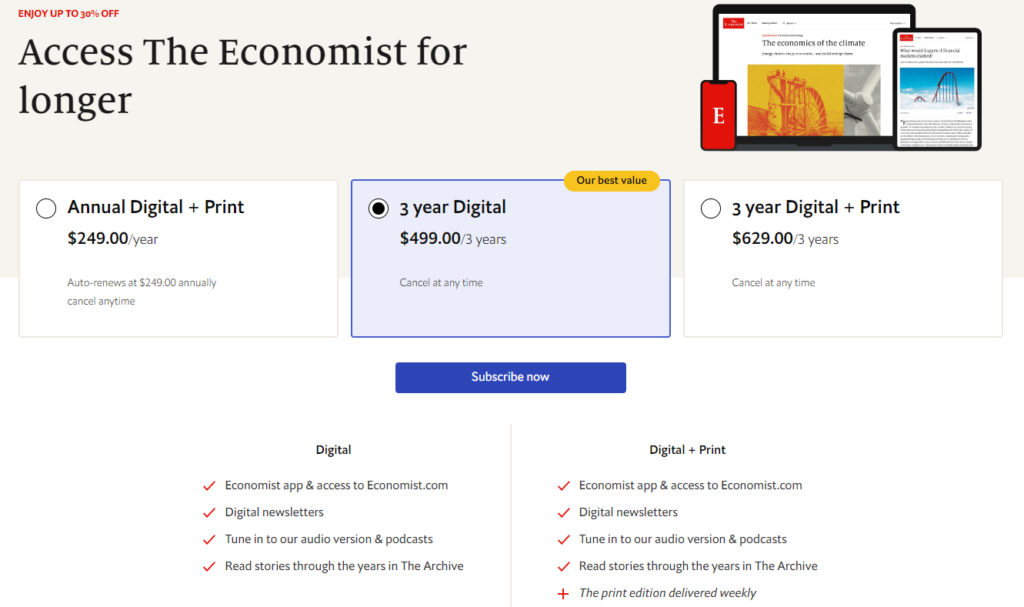How many and which offers optimize the conversion success on the paywall?
Markus Schöberl interviewed Arvid Tchivzhel, Managing Director of Mather Economics, and asked which offer strategies (‘decoy’, multi-offer vs. 1 subscription offer) is best for publishers to grow their audience.
[ Download Newsletter PDF – German ]
Perhaps the best-known offer strategy in the digital press world is an offer constellation that the Economist is said to have once presented:
- a) Digital subscription for X€ (e.g. 59€)
- b) Print subscription for X€ + Y€ (e.g. 125€)
- c) Print+Digital subscription for X€ + Y€ (e.g. 125€)
The goal of this so-called Decoy Pricing Strategy is to lure customers away from the heavily discounted digital subscription and instead win them over for the significantly more expensive (and more promising) combined offer ‘printed &digital’. Hardly any customer is likely to opt for variant b) when choosing from these three offers. But many more customers opt for variant c) in this constellation than if the print-only subscription is not even offered. How and why this is so, explains the behavioral economist Dan Ariely in a very worth seeing and only 20 minutes lasting Ted Talk from the year 2008. However, at this event, he presented the Economist’s offer as a kind of inexplicable oversight, which was quickly eliminated after contacting the publisher.

Is a Decoy Price Strategy similar to the Economist promising? And why?
I think Decoy Pricing still functions, but it has evolved since the Economist first started offering it. Not just to persuade users to accept a higher price, but also to increase their lifetime values. The incentives today are working to create longer term and lasting offers. In actuality for the economist’s digital offers, it is clear that the annual subscription is superior to the monthly subscription from a consumer POV, as it is the lowest effective price across 12 months. For the Economist, it is better despite the discount due to a better retention and lifetime value after 12 months.
Would you advise a publisher to present one offer or multiple offers on their paywall? Why?
In regard to this question, three offers on a landing page is typically best practice (given the product and price are sufficiently different). When a digital only news startup only has one digital subscription product, then they could only make two offers (yearly vs monthly). The more established Print Medias should be able to have three offers.
Special promotional offers on the paywall can normally be presented as individual offers. This is also true for targeted email advertising. It could be a “Flash-Sale” or a “Special offer” which is based on an individual’s propensity to subscribe, that is intended to trigger a purchase decision at this precise moment. With such a “forced decision with real time activation” (a paywall popup, a promo email, SMS or a push notification in the app or website), a single offer with a very low price (for example: 6 months for 1$) will work best.
[ Link to full access to this article ]
Arvid Tchivzhel is managing director at Mather Economics, based in Atlanta, Georgia, USA. He is a trusted partner, having advised hundreds of respected global brands with digital transformation strategy and implementation. For more information, connect with Arvid at arvid@mathereconomics.com. Markus Schöberl’s email is schoeberl@pv-digest.de.
#subscription marketing #data analytics #pricing #paidcontent




